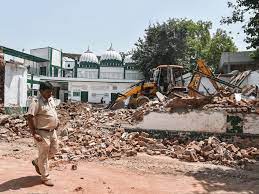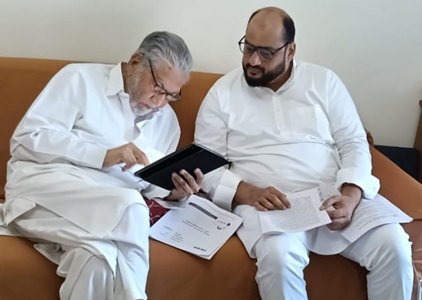By Saroor Ahmed
Without getting engaged in the Hejab debate, the need of the hour is to make a dispassionate relook on practice of school uniform. This is because the concept of school dress is fast losing its real spirit. Instead of being a symbol of equality, it has become a tool in the hands of capitalists to mint money.
It is being argued that the uniform is the best leveller in the class-room and helps in identifying children. But there is another side of the story too. It opens the scope for differentiation among children of various schools, especially between government and hi-fi public schools, particularly in the common
gatherings where students of different institutions are invited.
Unlike the original idea, children of up-market private schools are dressed in expensive uniform and in winter they wear costly blazer and coat. This is in total contrast with the children of the lower income group where parents even struggle to buy a single piece of uniform. Instead of glorifying the idea of uniform one should keep the eyes open and see as to how the school managements across the country have wreaked havoc in the name of dress-code.
An incident involving my school days may help understand the issue in a better way. I was then either in Class-IV or V in the American mission school in Gaya (Bihar). I was not allowed to take part in the annual sports as my parent could not afford to purchase the sport shoe for that particular occasion.
It so happened that my father’s money could not come on time from Siliguri (West Bengal), where he was posted in an MNC. My mother who was a teacher in government school in Gaya could not get salary on time–a common phenomenon then.
As I had a black leather shoe, which was a part of the normal school uniform, and not white kets, which was compulsory for the sports event–which use to take place only once a year-I was denied the permission. How can I be a part of parade and other sporting events with black leather footwear when other children were in white canvas shoe?
Though this incident had happened some 50 years back it is still etched in my mind. The school might have its compulsion. But it gave no concession notwithstanding the fact that the American nuns (who used to run it) , were personally known to me from my infancy as my elder sister and brother were they former students of the same school . Not only that my mother was in a friendly term with them as she can speak and understand English with American-accent. It is because of this reason that she helped children of several friends and relatives admitted in that school. Yet nothing worked for me on that sports day.
Those were the period when the government schools in general, save Kendriya Vidyalaya, do not use to have any uniform. Therefore, we with uniform could be identified as something cut-above other children. I shed this fake superiority complex soon after leaving this premier-most school of the town–but many of our friends continued to suffer from this disease for quite long .
By mid-70s most of the government schools too started introducing uniforms. But the missionary and private institutes scaled up their standard. After 1980s there was mushroom growth of private schools all over India–many opened with the sole purpose of business. They are more rigid on the practice of
uniform then the missionary schools .
Till our time the children were allowed to wear pull-over and muffler of different colours. But blazer, coat, sweater, belt, muffler, badge etc of particular colour and design all became a part of school-uniform. Besides, there is different uniform for PT day.
A few years back I was witnessed to an incident involving a teacher rebuking a child who came to the school wearing sweater of slightly different colour. Ironically, This was the story of the school which was catering to the need of lower middle income group. Yet the teacher was so insensitive.
There was another instance in which the girl could not attend her class for several days as her parent could not purchase the sweater of the required colour. As she had got admission in this prestigious educational institution of the city under the criteria of 25 per cent fixed for economically weaker section of the society. The government might have made the law with good intention but her guardian could not afford all the demands of that school.
The obsession for uniform is increasing. Now, as in the case of Udupi (Karnataka),
even colleges are introducing it.
The other problem is that many schools keep changing uniform rules. For instance, while boys were allowed to wear shirt and shorts as well as full-pants and girls both skirt-blouse and shalwar-kameez. But in later years many schools banned the wearing of shalwar-kameez. However, when the dengue started taking a huge toll
during monsoon, these schools allowed the girls to attend their classes donning trousers, even of jeans.
As if that is not enough; parents are compelled to buy a particular uniform just for the sake of Class-X or XII exams. This is because their children were the students of a non-affiliated CBSE school but appearing in the exam from affiliated school.
What the management of schools perhaps do not know is that there are no uniform in most schools of the United States. They have only certain standard cloth of which the dress should be made of.
In England there was a protest in 2011 against the strictness in implementing mini-skirt as a part of dress code for grown-up girls. – INDIA NEWS STREAM






0 Comments